

Table of contents
- Is cutting good for the reeds?
- Does timing matter?
- Pruning is allowed in spring
- Why autumn and winter are not suitable
- Consider ecological aspects
- How often does reed need to be cut?
- The right cutting tool
- Protective measures during cutting
- And so it is cut
- Urgent cutting measures
- Cutting measures in case of strong growth
- What to do with the cut reeds?
In the summer, reeds are surprisingly keen to grow and that is usually what is desired. The long stems quickly form a dense, green oasis of countless leaves. This plant is the ideal planting for the bank of a pond. Is it necessary to use scissors to tame this growth? And what about the dried up plant parts in autumn? Does it have to be cut then?
Is cutting good for the reeds?
Reed can quickly spread uncontrollably, taking over every free centimeter and even crowding neighboring plants. If it is not kept in check in good time by vigorous pruning measures, its volume can increase explosively in a short time. Pruning the reeds back to an acceptable shape is a tedious undertaking. With many types of reed, all above-ground parts also dry out completely in autumn. Every garden year starts with new, fresh shoots. Everything that has dried up must be consecrated to make room for new growth. For the optimal growth of the reed plant, suitable pruning measures are therefore an integral part of care.
Does timing matter?
In the course of a gardening year, there are always times when reaching for secateurs seems obvious. For example in autumn, when the stalks and leaves turn yellow-brown and dry up completely. What's the point of sticking with it now? None, say many gardeners and cut everything off. Just like you are used to from many other plants. But that is fundamentally wrong with the reed and can even damage it considerably. Even in the event that the proliferating green reeds develop too luxuriantly for the gardener's taste, patience should be exercised until the right time has come.
Pruning is allowed in spring
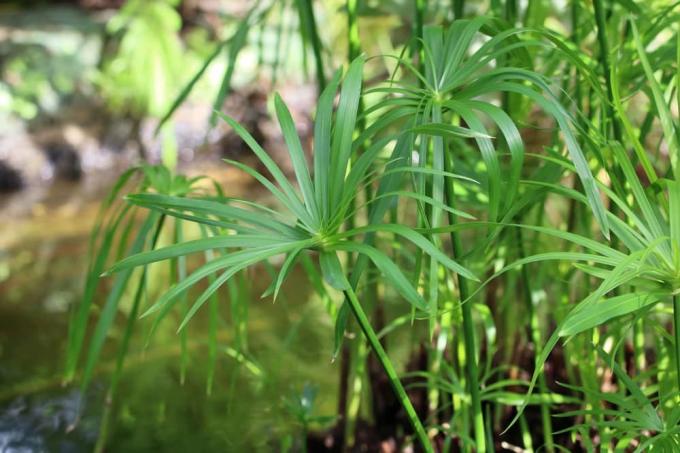
Spring is the only time of year that is ideal for cutting reeds, regardless of the variety. One variety is cut a little earlier, the other a little later, but always in spring.
- Spring is ideal
- and the only suitable period
- the exact time depends on the variety
- based on the start of growth
- Pruning should be done immediately before new growth
- the weather also determines the timing
- after mild winters, the growing season often begins earlier
- the cutting time can be between the end of February and May
- the popular Chinese grass, also known as Chinese reed, is cut in April
Tip:
Sometimes the exact variety designation and the time of pruning are not known. Then it helps to check the reed plant at short intervals in the spring. As soon as they sprout again, it is high time for pruning. The date can then be reserved for next year.
Why autumn and winter are not suitable
In autumn, the stalks and foliage of the reed plants change color from bright green to yellow or brown. Without sap, completely dried up, the above-ground shoots rise into the air, life has completely left them. Nevertheless, they are still needed by the plant to get them safely through the cold season. They form a dense, protective coat that softens the icy winds and thus makes the plant hardy.
- leave everything that has dried up
- it serves the plant as frost protection
- Pruning in the fall increases the risk of frostbite
- hollow tubes can fill with water
- this accumulation of water favors putrefaction
- the reed grass is damaged
- or die altogether
Incidentally, dried up reeds also have a very decorative effect in the garden in winter. Especially when hoarfrost settles on it and the whole plant glitters in the morning light.
A notice:
Some evergreen grasses are often mistakenly referred to as reeds. Withered and damaged shoots may be carefully removed from these plants in autumn.
Consider ecological aspects

Many densely overgrown reed plants accommodate animal guests in winter. Ladybugs and lacewings like to use the dried-up parts of the reed as winter quarters because they find protection from unpleasant weather conditions there. Larvae often cling to the stalks of the water reed, waiting for warmer temperatures to hatch. Almost all of them are useful creatures that protect the garden from pests during the summer.
- pruning too early can disrupt the development of the animals
- Check the reeds for animal residents before cutting
- then it's better to wait with the cut
- only cut when the roost has been left
- possibly. skip the cut for a year
- the reed can easily withstand a year without pruning
How often does reed need to be cut?
Once a year, always in spring, the reeds are cut. With such a growth-friendly plant, regular annual pruning is also essential to maintain the desired shape. The dried-up parts of the plant also literally force the annual cut. They are dry but still extremely stable in their shape. Even in spring and summer, they remain firmly attached to the plant and take up space, significantly reducing the space for new growth. The green reed with brown dabs of color also looks a bit strange or even unhealthy.
Tip:
If the cut could not be made in time before new growth, it should not be made up for at a later date. A year without pruning does not harm the reeds. However, the reeds must be cut by next spring at the latest.
The right cutting tool
Cutting the reeds is an extensive and often time-consuming activity. It must be well prepared so that the execution runs smoothly. This includes the right cutting tool, which makes cutting in dense undergrowth possible.
- The extent and density of the reed is determined by the cutting tool
- Knives and secateurs are unsuitable for dense vegetation
- should at least have long cutting blades
- a large hedge trimmer is even better
- pruning shears have also proven their worth
- electric hedge trimmer is ideal
A notice:
The cutting tool used should be sharp to leave clean cut surfaces. In addition, it should be cleaned and disinfected beforehand so that no pathogens are transmitted when cutting.
Protective measures during cutting

Before you start cutting, you should protect yourself from direct contact with this plant. Reed grass is sharp-edged and can cause serious cuts. Since the reeds are mostly tall, you should protect your whole body, but especially your hands.
- Reed grass is very sharp-edged
- Cut injuries like with a knife are possible
- Cover all parts of the body
- Wear long-sleeved clothing
- Goggles protect the eyes
- “thick” gloves are a must
Tip:
There is a risk of injury not only when cutting, but also when disposing of the clippings. Therefore, keep the protective clothing to the last.
And so it is cut
The spring cut is a radical cut in which all above-ground parts are cut off. With a large reed plant there is therefore a lot to cut. The planned approach makes the work easier.
- Have the appropriate cutting tool ready, cleaned and disinfected.
- Wear long clothing to protect yourself from cuts. Wear gloves and safety goggles if possible. When cutting with an electric hedge trimmer, small parts could fly through the air.
- Cut off the reeds "in portions". To do this, grasp a few stalks with one hand while cutting with the other hand. However, when you cut with a hedge trimmer, you need both hands. You can divide the stalks into several small bundles and tie them together beforehand.
- Cut the bundled stalks close to the ground. The remaining ends should be about 10 cm high.
- Gradually work your way from the outside in until you have cut off all the dead stalks.
A notice:
If the new shoots are already showing, the cut must be made over them so as not to damage their tips. If the new growth is already well advanced, the cut should be avoided. Alternatively, individual stalks can be carefully cut out.
Urgent cutting measures
Sometimes the reeds, which are robust in themselves, can also be affected. Wrong location and wrong care are triggers for unsightly or even life-threatening damage.
- progressive rot
- "Sunburn damage" such as yellow and wilted leaves
- require immediate pruning action
- even outside of the optimal time
- Partial pruning: Cut only affected parts of the plant
- in the case of severe rot, a radical cut is unavoidable
A notice:
Also take suitable protective measures against the risk of injury from sharp-edged blades when making partial cuts. The suitable, cleaned and disinfected pruning tool is also an important prerequisite for smaller pruning measures.
Cutting measures in case of strong growth
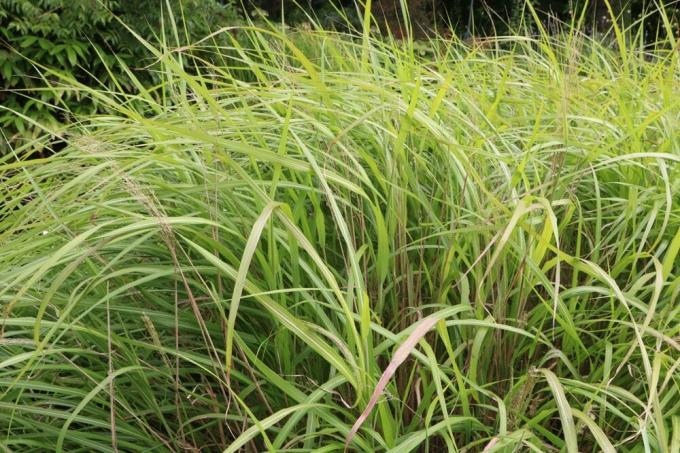
If a reed plant spreads so much that the radical pruning in spring cannot tame it, pruning in the root area is unavoidable. It should also be mentioned that it is best to take precautions when planting. Although the installation of a root barrier is labour-intensive, it reliably keeps the root area under control. If this work has been neglected, the reeds can spread unhindered.
- reduce the size of the plant
- with pickaxe or spade
- set the desired scope
- dig deep into the earth around it and cut off the roots
- dig up the severed roots
Tip:
The separated root parts can be used well for propagation. Just plant them in the new spot. This time preferably with a root barrier.
What to do with the cut reeds?
Anyone who cuts a fully grown reed plant piles up a small mountain with the cut parts of the plant. Creative people might enjoy some sturdy, hollow reeds. They are ideal for handicrafts, for example so-called insect hotels. But what to do with the rest? Can the reeds be composted?
- fibrous reeds rot very slowly
- Only put small amounts on the compost heap
- chop beforehand
- the rest can go in the compost bin
A notice:
If a diseased reed is cut, the cut material must be treated as residual waste and disposed of accordingly.
 garden editorial
garden editorial I write about everything that interests me in my garden.
Learn more about pond plants

Waterweed, Elodea densa - care from A to Z
Waterweed is one of the fast-growing aquatic plants that can adapt extremely well to a wide variety of water conditions. Not only does it do well in the garden pond, the Elodea densa can also be used in freshwater aquariums.

Marsh iris, Iris pseudacorus: care from A to Z
A pond is a special attraction in the garden and with the right planting it becomes an eye-catcher. A frequently used aquatic plant is the somewhat exotic-looking marsh or water iris. It is the perfect pond plant, which also has special properties.
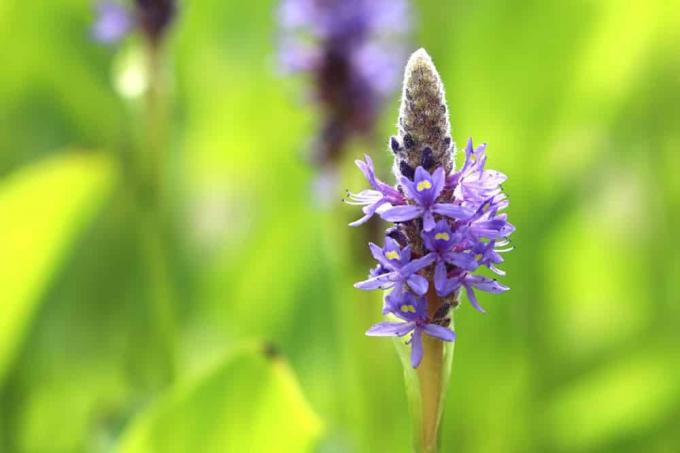
Hechtkraut, Pontederia: care from A - Z | 5 tips for wintering
Hechtkraut belongs to the water hyacinths and originally comes from America. However, it has also been cultivated since the 16th century, as it fulfills important functions on the shores of lakes and ponds. Interested hobby gardeners can find out here how care and overwintering should look like.
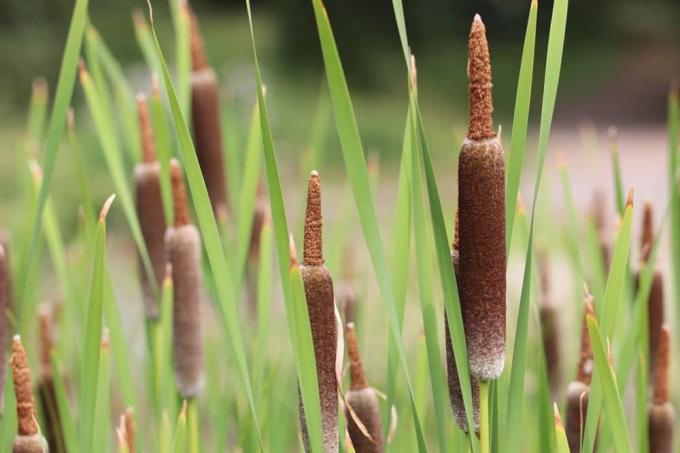
Cattails: care from A-Z | 8 tips for propagation & cutting
The bulrush is a popular plant for natural gardens with large bodies of water. As marsh plants, the Typha species have special requirements for their location and care is more complex. With targeted measures and the right combination of species, you can reduce the maintenance effort.
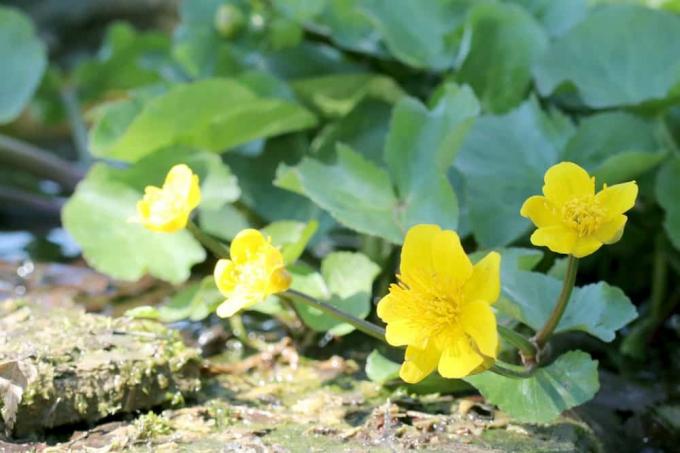
Marsh marigold in the pond: location, care and propagation
The marsh marigold (Caltha palustris) is a real early bloomer and the first flowering plant in the garden pond. In spring it shows its bright yellow flowers, which illuminate the edges of ponds and water bodies as well as wet meadows. It is a good plant partner and very easy to care for.

Gauklerblume - cultivation and care - is it hardy?
Juggler flowers form funny blossoms reminiscent of small faces. Native to the yellow-red range, they now also bloom in pink or blue. Some species love the moist environment and prefer to show off their color at the edge of the pond. A little care is enough for them.
